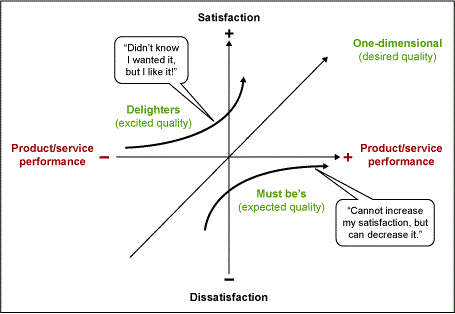Client's needs and satisfaction is always changing. In an attempt to keep up with his, Professor Noriaki Kano developed a theory: customer satisfaction is proportional to the extent at which the product or service is fully functional. In his model that he created, he aimed to reach 3 needs: basic, performance, and excitement.
I think that the Kano theory is a very excellent way to look at how we as designers and business owners can begin to not only satisfy our clients but delight them in everything that we do. I want to always have at least one delighting factor to my projects so that my clients are wowed. I think this causes not only satisfaction but loyalty to a company.
In the article that I read, they mentioned how DoubleTree Hotels use chocolate chip cookies to delight their customers. This can be seen in interior design when maybe a project is kept under budget and then something special is added in to make a project more exciting and overall more functional and beautiful.
What was stated at the end of the article were two very good points to consider as a designer or business owner and those were "1) what delighted customers in the past is now expected and 2) what is expected today will not meet minimum customer expectations in the future." This is important especially as a student who will be entering the design world as new trends and expectations are arising. I think a way to tackle this issue is by always keeping up with what is changing in our field and continuing education as a way to stay on top of things and keep informed.
Source:
https://www.isixsigma.com/tools-templates/kano-analysis/kano-analysis-customer-needs-are-ever-changing/

Comments
Post a Comment